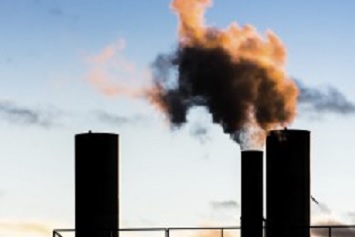In 2017, industrial activity accounted for 22% of U.S. greenhouse gas (GHG) emissions, third behind transportation (29%) and electricity (28%). When adding indirect emissions from the off-site generation of electricity needed to power industrial facilities, the share increases to 29.7%.

In contrast to the electricity sector, in which the means of reducing emissions are few and well understood (e.g., fuel switching and renewable energy), approaches to cutting emissions in the industrial sector are elusive. Part of the problem is that industrial GHG emissions are generated by hundreds of subsectors. Some of the more energy-intensive subsectors are petroleum refining and the production of iron and steel, cement, chemicals, glass, aluminum, food products, and paper products. Even if equipment and processes in some subsectors are similar and can be grouped together for GHG analysis, that still leaves a large number of differentiated circumstances requiring individualized, reasonably priced low-emissions alternatives.
Heat Is Essential
Another challenge, which was noted in the memo prepared for a recent hearing on industrial emissions held by the House Subcommittee on Environment and Climate Change, is heat.
“Many industrial processes—such as steel, cement, copper, and aluminum production—require high-temperature heat sustained over long periods to convert raw materials into useful end products,” the memo states. “In most cases, renewables are unable to provide the required high-temperature, long-duration heat. Certain renewable energy technologies, such as concentrating solar power, can generate both electricity and heat at high enough temperatures to support various industrial activities, but these technologies have not yet been deployed in industrial settings.”
No Substitutes for Products
At the hearing, S. Julio Friedmann, PhD, a researcher at Columbia University’s Center on Global Energy Policy, described additional challenges to reducing industrial GHG emissions.
- No substitutes. There are few viable substitutes for commercial industrial products, such as cement, steel, glass, paper, and plastics. In the United States and the world, more of these materials are used every day, and attempts at reducing consumption have not been successful.
- Long-lived critical assets. Cement kilns, blast furnaces, ammonia plants, and refineries are multi-billion-dollar assets. They operate today making money for their owners, are mostly efficient, and serve key manufacturing chains and stakeholders, including cities and the military. Some facilities have just been upgraded, and most anticipate long operational lives. This makes it unlikely they’ll be replaced soon.
- Few options. Even if replacing major industrial facilities is an option, it is unclear if replacement would serve to produce critical products with minimal emissions. Primary steel and cement production have by-product chemical emissions from coking and clinker production, and there are no technology options that do not emit. Electrification of many of these systems is not possible as a retrofit and is very challenging or speculative at new facilities.
Some Options
There are a few rays casting some hope on this bleak assessment. According to Friedmann, the most important is carbon capture, use, and storage (CCUS).
“[CCUS] is the only technology known today that can capture process emissions from cement,” testified Friedman. “It is the first, cheapest, largest fraction of what can be deployed in the U.S. and globally. It is the fastest, cheapest pathway to low-carbon hydrogen and can help enable other key approaches like biofuels and renewable hydrogen. It is also the lowest cost for mitigation available today and will drop further in price through deployment.”
Other meaningful routes to GHG reductions noted in the hearing memo are energy-efficiency and process improvements. In 2015, the U.S. Department of Energy estimated that adopting highly efficient technologies could reduce energy consumption in the industrial sector by as much as 32% by 2025. Such a reduction in consumption within the industrial sector could contribute to a decrease in overall U.S. energy consumption by up to 12% by 2025.
“Heating and motors—such as those found in pumps, fans, compressors, refrigerators, and air conditioners—account for 30% of industrial energy use, providing a prime opportunity for efficiency improvements,” states the memo. “Installing advanced motor systems, high-efficiency boilers, and ‘smart manufacturing’ technologies can help reduce onsite energy consumption. Other process changes such as intensification (i.e., using the same machine for multiple processes or running at higher process temperatures) can further improve the efficiency of industrial operations. In addition, development of new materials and production methods, such as additive manufacturing or reuse of waste materials, can improve efficiency across subsectors.”
Government Procurement Standards
These and other ideas, such as low-carbon hydrogen as an energy source, have been around for years but have yet to result in deep cuts in industrial emissions. Innovation needs more help. According to Friedmann, federal, state, and city governments, which buy “enormous fractions and volumes of industrial products,” can provide this assistance by implementing “zero-emission, ‘buy clean’ procurement standards.” Easier financing to expand the infrastructure for CCUS would also be a key step in the right direction.
Interestingly, Friedmann did not endorse a carbon tax, one policy approach endorsed by climate activists, particularly for the power sector. But a carbon tax might be less feasible for industries like steel and petrochemicals because it could spur protectionist trade policies, such as a border carbon adjustment, said Friedmann.
